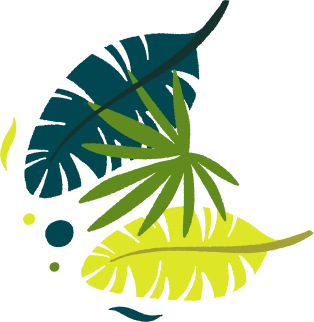


Packing our bags after a magical cruise of Halong Bay, my friends and I faced the next leg: the long haul down to Phong Nha. We learned it’s about 510 km by road. The distance could take 10-15 hours depending on the route - for example, a direct sleeper bus runs in roughly 10 hours, whereas a multi-leg trip via Hanoi may stretch closer to 14 - 15 hours.
Our solution was an overnight sleeper bus, departing Ha Long in the evening. (As one ticket site confirms, the direct Ha Long→Dong Hoi bus departs around 10:00 and takes ~10 hours.) This way we rolled into Dong Hoi by morning. The bus fare was only about VND 500k (~US$23), which matched reported ticket prices of USD 18-26 for the route.
If you prefer breaking the journey or want a faster trip, you can travel via Hanoi. Ha Long City has daily buses to Hanoi (~3.5-4h, ~$5-10) and Hanoi offers quick flights or overnight trains to Dong Hoi (Quang Binh).
For example, Vietnam Airlines has flights from Hanoi (Noi Bai) to Dong Hoi (Quang Binh Airport) taking roughly 1h10m - we even spotted one-way fares as low as US$32 (around $78 round-trip) if booked early.
Alternatively, the Reunification Express train from Hanoi to Dong Hoi (Quang Binh) is popular: it’s an overnight ride (~13-14h) with air-conditioned sleeper berths. (Train tickets range broadly - reports suggest AC sleepers around $25-30, up to $70 for VIP cabins.) We didn’t take it this time, but it’s a comfortable option if you like scenic countryside.
For door-to-door comfort, private transfers (vans or cars) are available too. Companies like HuraCars offer private vans (up to 12 seats) for about VND 2.2-3.3 million (~$88-$132) one-way from Hue to Phong Nha - likely similar from Ha Long/Dong Hoi. This is pricey, but you get air-con, English-speaking driver, and flexible stops (we once did Hue→Phong Nha, enjoying sights like the Vinh Moc tunnels en route). In any case, once you reach Dong Hoi City (near the coast), it’s only ~45 minutes (40 km) by taxi or shuttle to Phong Nha town (budget about VND 300k for a car).
We planned 3-4 days in Phong Nha. The best time is during the dry season (roughly Feb-May) when the caves and trails are accessible; heavy rains from late summer can flood many caves. Budget-wise, Quang Binh (Dong Hoi/Phong Nha) is quite affordable by Vietnamese standards. Guesthouses in Phong Nha town range from ~$10 dorm beds (backpackers’ hostels like Easy Tiger) to $20-30 private rooms or homestays (Phong Nha Farmstay is a popular riverside B&B). Book in advance during peak holiday times.
We also noted practical tips from locals and guides. Most attractions are cash-only and in VND, so carry enough cash (ATMs are available in Dong Hoi and Phong Nha town). Phones have decent signals in town, but inside caves/wild areas don’t expect coverage.
Packing tip: bring swimwear and a towel - many cave tours involve water and mud bathing. Sunscreen, sunglasses and mosquito repellent are lifesavers in the jungle. Good sturdy sandals or hiking shoes are a must, as paths can be slippery. We even rented life vests and helmets at Mooc Spring for fun - adventure comes standard here.
Phong Nha town (actually just called Phong Nha) is a small riverside village hub for travelers. We stayed at a cozy family-run homestay along the Son River - imagine hammocks and bicycles outside your door! Accommodations and eateries cluster near the riverboat dock.
For food, don’t miss local specialties: the region’s bún bò Huế (a spicy noodle soup) has a reputation here, and “thịt ram” (caramelized pork) is a Quang Binh home-cooked favorite. Riverside cafes serve strong Vietnamese coffee and fruit shakes - perfect for strategizing your cave itinerary. Breakfast noodle soup or bánh mì from a street stall will power your day.
Budget tip: Many tour bookings (for caves, river cruises, bike rentals) can be done on arrival. There are also motorbike rentals (~VND 150k/day) if you’re comfortable driving, letting you explore the surrounding countryside and caves on your own.
Phong Nha-Kẻ Bàng National Park is a UNESCO site famed for its karst caves. We devoted the first day to the Phong Nha Cave area.
Phong Nha (wet) Cave: This is the park’s signature cavern, entered by wooden boat along an underground river. Boats depart from the park wharf (15 km from town). The tunnel-like cave mouth opens into a cathedral of limestone formations. The entrance fee is VND 150,000 (∼6 USD) per adult, plus VND 550,000 for the boat (fits 12 people). We split the boat cost with other travelers, so it was only ~VND 50,000 each. Park hours are ~7:30 AM-5 PM. Visiting as early as possible is wise - afternoons can be rainy or crowded. Once inside, an expert guide (free with ticket) points out stalactites shaped like buddhas, dragons, and lotus flowers. We had to watch our head on the low ceilings but were awed by the dimly lit rock “gongs” that echo when tapped.
Here is the location of Phong Nha Cave on google maps. It is rated 4.7 stars on google with total reviews crossing 1.4k as of writing this travel guide in May 2025.
Tiên Sơn (Dry) Cave: After exiting Phong Nha’s wet cave, we climbed a set of concrete steps to Tiên Sơn Cave (literally “Fairy Cave”) which sits in the same mountain. It’s a dry chamber with massive pillars and coral-like formations. Admission is VND 90,000 for adults (half price for kids).
The cave is open 7:30 AM-4 PM. The combined boat to Phong Nha+Tiên Sơn costs VND 550k (the same boat does both caves). We spent 30-45 minutes inside Tiên Sơn - not as grand as Phong Nha, but worth a visit for its huge “flower garden” of rocks.
Dark Cave (Hang Tối) & Chay River: In the afternoon, we headed to Dark Cave, a muddy underground trip that also includes zip-lining and kayaking. The park charges VND 80,000 adult for Chay River & Dark Cave entry (with basic swings and a mud bath), or VND 450,000 for the full “mud-bath+zipline” package. We opted for the package: it included a thrilling zipline across the river, kayaking under the jungle canopy, a fun muddy pit to dunk ourselves in, and exploring the pitch-black cave with headlamps. The total adrenaline was high - this is a highlight for many younger travelers. (Note: They require long pants and water shoes here, and supply life jackets/helmets.) According to park info, plan for about half a day here, roughly 8 AM-4 PM.
Paradise Cave (Hang Thiên Đường): The next morning we tackled Paradise Cave. This is a dry cave with an epic passageway (7.5 km long, though tourists walk 1 km round-trip) and was once rated the longest dry cave in Vietnam. Its high ceiling is covered in stalactites, terraced fields of columns, and a central “stairway” of golden light. Paradise opens 8 AM-4 PM and costs VND 250,000 adult, 125,000 child. We arrived right at opening to beat the heat. (There are golf-cart rides up the hill for an extra fee, but we hiked.) Walking the illuminated path felt otherworldly - our guide joked it was like an underground “King’s chamber.” Plan 2-3 hours here.
Here is the location of Paradise cave in google maps. With over 6.2k google reviews and an average rating of 4.7 stars, it seems to be more popular than Dark cave. Personally, I liked the Dark cave more than Paradise cave since there was a feeling of adventure in the dark cave meanwhile paradise cave felt ‘easy’ and ‘touristy’ for the lack of better words!
Son Doong & Hang En: We had dreamed of Son Doong, the world’s largest cave, but it’s prohibitively expensive and booked out (expedition tours are ~US$3,000 and limited to 1000 people/year). Instead, we learned about Hang Én (Swallow Cave), a colossal cave that can be visited via a one-night trekking tour. It involves a guided jungle hike and overnight camping inside Hang Én (big enough to house a skyscraper!). We didn’t have time for this 3-day trek, but it’s highly regarded on travel forums. (A note: Hang Én is actually advertised as the third-largest cave in the world, and visits require an overnight stay.) If you’re a trekker with days to spare, consider booking the Hang Én tour through a local outfitter or Oxalis - it’s far cheaper than Son Doong yet still spectacular.
Or if you want to do the most adventurous tour of Vietnam - look for the Kong Collapse tour which is also a premium tour like Hang Son Doong but more challenging! It will cost you around $1350 (told you its luxury cave tour!).
Outside the famous caves, we found several “off the beaten path” spots:
Suối Nước Moọc (Mooc Spring): This natural spring-fed river has emerald pools perfect for swimming. Admission is VND 80,000 adult (or VND 180k with kayak/raft included). We rented a simple bamboo raft and paddled around - it felt like Vietnam’s mini-blue-lagoon. Bring swim trunks and towels for sure. There’s even a small zipline and water slides here if you pay a bit more. We went in the late afternoon to avoid midday sun.
Botanical Garden & Waterfalls: Phong Nha also has a Botanical Garden with jungle treks and a waterfall. Entry is only VND 40,000 for adults. We hiked a short trail (about 1.5 hrs round-trip) to a mossy waterfall pool. It was refreshing to see wild monkeys and birds - a peaceful counterpoint to the caves. The garden is open 8:00-17:30, and there are multiple trail options (shorter waterfall or longer jungle loop).
Other Caves: If you’ve got extra time and energy, consider a half-day motorbike or jeep tour to the Tu Lan or Khe Ry cave systems outside the park (less-visited wild cave treks with rivers). These require guides/tours and are muddy adventures. Also, “Hang Tiên (Fairy Cave)” is a short cave trail inside Paradise Cave mountain (you can walk a few meters into it). But honestly, we were quite satisfied with Phong Nha, Paradise and Dark - they keep you busy!
Local Life: In town, renting a bicycle (VND 40k/day) to ride the flat valley roads was a fun way to see rice fields and school kids waving. In the evenings, we joined backpackers at BBQ grills and beers under café lanterns. The riverbank lights of Phong Nha town are romantic - don’t miss a drink by the water at dusk.
Dress & Gear: As mentioned, swimwear/towel is a must (for cave rivers, springs and mud baths). Sturdy sandals or sneakers are better than flip-flops when trekking wet caves or jungle paths. Pack mosquito repellent and a rain jacket (mornings can be cool underground, and sudden showers happen). A waterproof bag or zip-lock for your phone/cash is handy in boats.
Cash & Booking: Bring enough cash (ATMs dole out limited VND). Most park tickets and tours are bought on-site. For Paradise or Dark Cave, you can often buy tickets at the park entrance kiosk or through your hostel. Son Doong/Hang Én tickets must be pre-booked months ahead online.
Timing: Caves open early. We learned that hitting Paradise Cave at opening (8 AM) avoids crowds and the midday heat. Similarly, plan the Dark Cave adventure in the morning so you finish by afternoon. Many travelers suggest visiting the biggest sites first - we did Phong Nha/Tiên Sơn and Paradise on separate days for a relaxed pace.
Safety: Always go with a guide for deeper caves or river tours - cave interiors can be disorienting. Do not touch the stalactites (they’re very fragile). In wet caves, watch your step as it’s slippery. Carry a small flashlight if possible, though guides will provide headlamps.
Respect & Environment: Phong Nha-Kẻ Bàng is a pristine park: please do not litter or graffiti. Keep voices down in caves and temples. You’ll see many Vietnamese pilgrims and tourists, so a polite smile and nod (or xin chào “hello”) goes a long way.
Our journey from Halong Bay down to Phong Nha was one of Vietnam’s great overland adventures. Along the way we experienced cool mountain landscapes, endless jungle, and the most mind-bending caves of our lives. By mixing and matching transport - a night bus, a domestic flight, and even a hired van - we made the long distance manageable on a tight schedule. Phong Nha itself felt like a friendly village tucked between towering limestone cliffs. Every day was filled with eye-popping sights, from emerald rivers to dripping cave cathedrals.
As our boat pulled away from the Phong Nha Cave entrance for the last time, we both sighed in happiness and exhaustion. We’d packed our short trip with unforgettable experiences. If you’re traveling in Vietnam, don’t miss this stretch from Ha Long to Phong Nha - it’s a journey of contrasts (bay to mountains, boats to caves), and absolutely worth it. Safe travels - and don’t forget your flashlight and bathing suit!
In case you want to travel the opposite way i.e. Phong Nha to Halong Bay, then we have an excellent travel guide for that too for you to read.
Get the latest information about our tours and special offers!